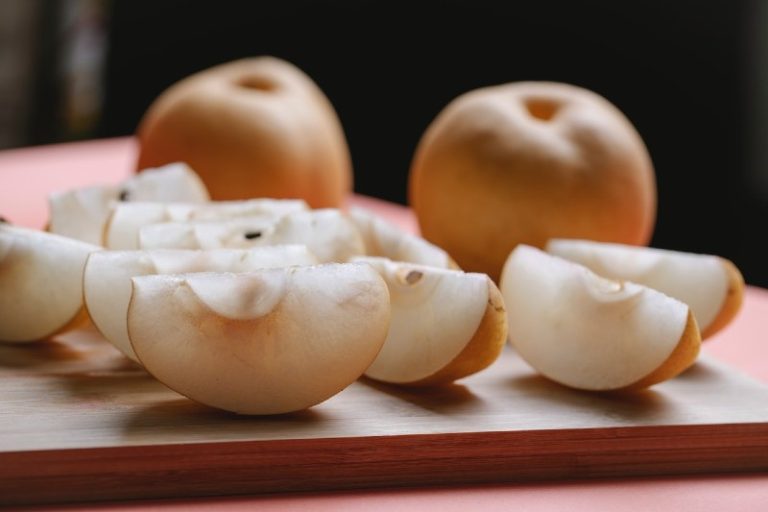“The British Larder. A Cookbook for All Seasons” by Madalene Bonvini-Hamel
“The British Larder” cookbook has been eagerly anticipated by those who have been following the website of the same name since it was created in 2009. I am a follower myself and have enjoyed vicariously cooking alongside the author in her restaurant kitchen in Suffolk (also called The British Larder) with her partner Ross Pike, or Mr P as she calls him, using the best local ingredients along with home grown vegetables and foraged foods found in the nearby fields and hedgerows.
Madalene Bonvini-Hamel, originally from South Africa, came to the UK in 1994 and worked in many of London’s top restaurants, including Aubergine, Claridge’s, Le Gavroche and Kensington Place before moving to Suffolk to open her own in 2010. The restaurant came about as a result of the success of the website, rather than the other way round.
The book is large and heavy, covering over 400 pages of recipes. The plain blue glossy cover suggests a serious tone (an encyclopedia comes to mind) that I would not immediately reach for if I saw it in a bookshop and knew nothing about it. The chapters are divided into monthly sections, with a foreword of what Madelene calls her “culinary rituals”for each month: making marmalade in January, drying wild mushrooms in April, making elderflower cordial in May, pickling damsons and making hedgerow fruit pastilles in September and so on. There is also a list of British Larder heroes listed in the monthly foreword of what is in season and best eaten at that time. For instance, the food heroes for January are duck, Jerusalem artichokes, salsify, venison, woodcocks and swedes and each her ohas a paragraph with suggestions on how best to source, prepare and cook it. The recipes that follow use the food heroes of that month at the heart of the dish.
As with the website, all the recipes look tantalisingly simple and are beautifully photographed by Madalene herself, but do not be fooled by the apparent simplicity of the dishes. Madelene is a trained chef and the recipes reflect this. They invariably come with a long list of ingredients and numerous stages involved in the preparation of each dish. Even the humble Scotch egg, here called“Crispy Quack eggs with Radish Mayonnaise”, is made with cooked duck leg meat and the instructions of how to make it are long. Another recipe for “Spiced Pickled Eggs and Pork Scratchings”, staples at the restaurant bar apparently, require a couple of days of salting the pigskin before roasting them in the oven.
The ethos of this book places animal husbandry and locally sourced produced at the very centre of importance. The word “local”, however, means different things around Britain. For instance if you live in an urban area, the nineteen different ingredients that make up a “Rustic Game Terrine” which includes boneless rabbit loins and partridge breasts, will be hard, and expensive, to find outside a few specialist butchers. How likely is it that the average cook is going to make Madalene’s recipe for “My Best Ever Roast Potatoes”, which involve parboiling the potatoes and then leaving them overnight in the fridge to dry out before roasting them the following day in goose fat? I might try it once to see if I can taste the difference, but then no doubt I would go back to my own tried and tested means. The recipes require full-time dedication and passion.
Madalene writes at the beginning of the book that her aim is to demystify the process of cooking food normally only found in top restaurants and to lay bare the layers that go into the process of these dishes for the readers. This she does, with much generosity, sharing the knowledge and technique that she has amassed over many years as a professional chef. She even gives cook’s notes at the end of each dish, with tips on the storing of the dish or where best to source the ingredients. Yet it is not a cook’s book, in my mind, but more a chef’s manual.
I did try her “Pot-roasted Mallard with Cider apples and Celeriac Mash” and I found everything needed much longer to cook than Madalene instructs. The mallard was still bloody when I took it out of the oven and meant that I had to put it back in a, now, cooled down oven. The celeriac took much longer to soften than stated in the recipe. It was very watery after I had mashed it with the cream (and still quite lumpy) and I wondered whether I should have drained it of the wine and chicken stock that I had cooked it in before adding the cream. The cider in the apple reduction took approximately half an hour to caramelise rather than the eight minutes she suggested.
And what was the verdict? Each component of the dish was cooked in butter, chicken stock and wine (or cider for the apples) making the meal very rich. The mallard and its sauce were delicious, but the celeriac lost its distinctive taste with all the added ingredients and the apples in cider made the whole dish far too sweet.
“The British Larder” book is not for the average cook, but I will enjoy it nevertheless, just like the website, as a beautiful, magic carpet that can transport me to a foodie heaven far away. I will leave the cooking of the recipes to the professionals.
Further Information
The British Larder: www.britishlarder.co.uk
Follow on Twitter: @BritishLarder
Absolute Press: www.absolutepress.co.uk
Follow on Twitter: @absolute_press


